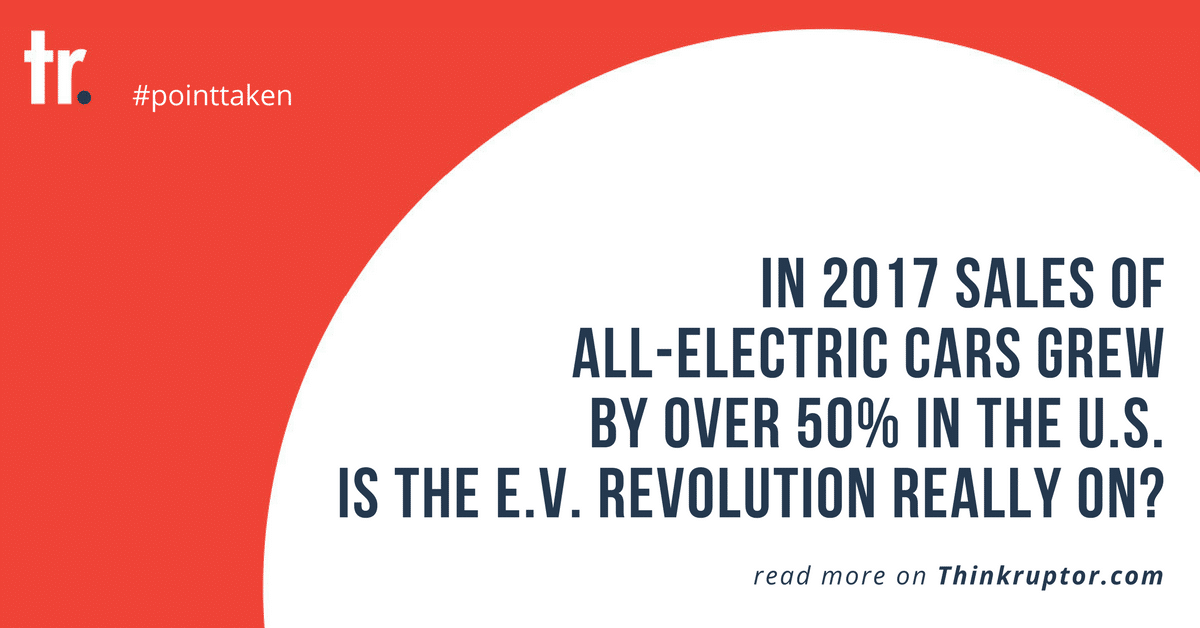A decade into the new renaissance of electric vehicles
Electric cars first appeared in the second half of the 19th century. The first vehicles were high cost, low speed, and had a very limited range of battery. Compared to their later internal combustion engine counterparts, they didn’t stand a chance in surviving. Still, it was an electric vehicle that held the vehicular land speed record until at least 1900.
More than a century after the conception of electric vehicles, the world finds itself well into a second electric vehicle renaissance. But is it a viable one this time around?
The future of electric cars is now
At the very end of the 20th century, interest in electric cars and other alternative fuel vehicles rapidly increased, mostly due to growing concern over pressing issues with hydrocarbon-fueled vehicles. From ongoing damage to the environment caused by emissions and overall sustainability concerns with hydrocarbon-based transportation infrastructure to tremendous improvements in electric vehicle technology, the time simply seemed appropriate to move on to better solutions.
A couple of decades later, environmental and infrastructural issues persist, but so does the new electric car industry. Surprisingly, while the main obstacle standing in the way of mass electric vehicle acceptance throughout the 20th century may have been due to lack of technology and speed, what stands in the way of acceptance today seems to be a simple change in mentality.
Interestingly, what drove the first electric car revolution in the late 19th century is exactly what drives it today – startups.
From Tesla, Inc. (formerly Tesla Motors), founded less than 15 years ago, to one-year-old newcomers who raise $112mn in a first investment round, startup companies and their innovative solutions are, essentially, what is making this industry happen. Overcoming infrastructural issues and cost, these young companies are bringing to market what most consumers still believe to be a futuristic concept.
The first electric vehicle renaissance
Though the invention of the electric engine has been attributed to a few people, it was Hungarian Ányos Jedlik who invented an early type of electric motor as early as 1828. In an entirely unrelated feat in 1834, Vermont blacksmith Thomas Davenport built a similar engine which operated on a short, circular, electrified track. That same year, Dutch Professor Sibrandus Stratingh built a small-scale electrical car, powered by non-rechargeable primary cells.
Fascination with motor vehicles in general grew rapidly in the late 1890s and early 1900s, much like it did at the turn of the last century. During this first renaissance, Walter C. Bersey created a fleet of electric cabs, introducing them to the streets of London in 1897. That same year, back in New York City, Samuel’s Electric Carriage and Wagon Company, later renamed the Electric Vehicle Company, began running a dozen electric hansom cabs.
In 1911, the first gasoline-electric hybrid car was released to the US market by the Woods Motor Vehicle Company of Chicago. The hybrid was a commercial failure, proving to be too slow, too expensive and difficult to service – all obstacles that the likes of Tesla Motors were faced with in the early 21st century.
Fast forward to the early 20th century and, due to all of these well-known obstacles, electric cars began losing their position in the market. By the roaring 1920s, an improved road infrastructure begged for cars that were more affordable and with a greater speed range. Worldwide discoveries of large petroleum reserves led to mass availability of affordable fuel and that was the end of that story.
Most electric car makers of the time halted production at some point in the 1910s. Electric engines, however, continued to be used in other transportation and, on 31 July 1971, an electric car received the historical distinction of being the first manned vehicle to drive on the Moon – Dubbed the Lunar rover, a moon buggy developed by Boeing and GM subsidiary Delco Electronics, was first deployed during the Apollo 15 mission.

Is the electric car revolution viable today?
In a little bout of history repeating itself, interest in fuel-efficient or environmentally friendly cars declined among consumers in the United States toward the end of the 20th century. Consumers in this, one of the largest car markets in the world, greatly favored sport utility vehicles, which were affordable due to low gas prices, despite their incredibly poor fuel efficiency.
Car manufacturer chose to focus development on SUV-type vehicles in the US, which came with larger profit margins than the smaller “city” vehicles preferred in Europe or Japan.
European car manufacturers focused on size, the smaller the better, and lower fuel consumption, to appeal to their own core consumers, while Asian car manufacturers looked to maintain their stakes in international markets. In 1999, the Honda Insight hybrid was the first hybrid to be sold in North America since the Woods hybrid in 1917.
In response to the flagrant and intentional lack of participation in the electric car industry by large automakers, a number of startup companies soon grew in their place, manufacturing electric cars for mass markets.
California electric car maker Tesla Inc. began developing the Tesla Roadster in 2004 and first delivered it to market a decade ago, in 2008. The Roadster was the first highway legal serial production electric car to use lithium-ion battery cells and the first all-electric car to travel more than 200 miles (320 km) on one charge. The next Tesla, the Model S, was released in June 2012 and the first delivery of one of these vehicles to a retail customer in Europe happened in August 2013, while deliveries to the Chinese market began in April 2014.
In May 2015, worldwide sales of highway legal all-electric passenger vehicles and light utility vehicles passed the half million unit milestone and total global sales of pure electric passenger cars and utility vehicles passed the 1 million unit milestone in September 2016.
In February 2017, Consumer Reports named Tesla as the top car brand in the United States and ranked it 8th among global carmakers and sales of electric cars, from now famous Tesla to Nissan’s models, continue to soar worldwide.
The same old obstacles of more than a century ago, however, remain. State and national governments worldwide will have to adapt existing infrastructure and build new infrastructure to adhere to electric vehicles on their roads. Consumer mentality will have to change, at least just enough to accept that the “futuristic” concept of vehicles that run on sustainable, environmentally-friendly energy alone, and efficiently at that, is here and available.
Throughout 2018, there will be plenty to hear and see from the electric vehicle industry, from industry leaders and surprising startups to some of the largest global car manufacturers just joining the electric car race.
Look out for companies like Byton, which just released its new all-electric CUV at CES 2018, and Nikola, a company working on an electric-hydrogen semi truck that it has announced the release of in the next few years. Tesla won’t be quiet this year either, with great expectations in the air around the Model 3, the Tesla Semi, and the new Roadster.
